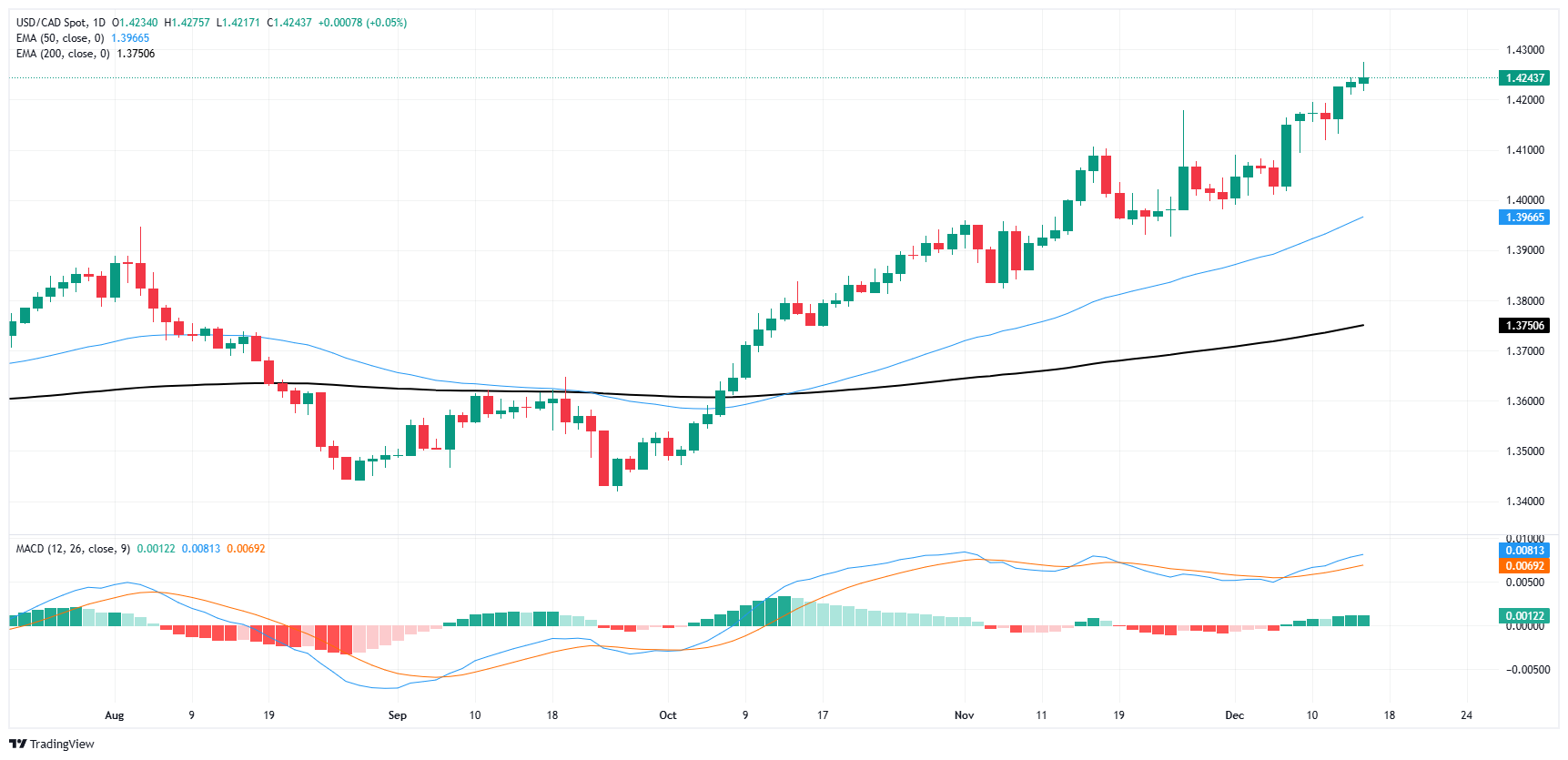提供最佳价差和条件
 了解更多
了解更多
The Canadian Dollar (CAD) hit another soft spot on Monday, testing into a 56-month low near 1.4250 against the US Dollar. With the Loonie falling to its lowest prices in almost five years against the Greenback, soft language from Bank of Canada (BoC) Governor Tiff Macklem and a tumultuous release of Canada’s latest Federal Economic Statement did little to assuage investor concerns.
Canada is now expected to see slightly-lower growth in 2025 and 2026, and a rosier-than-before outlook on Canadian Gross Domestic Product (GDP) growth in 2024 is being met with some scepticism from CAD traders. Canadian Finance Minister Chrystia Freeland resigned from her post early Monday, throwing the government’s FES release into a tailspin as investors scrambled to figure out who would deliver the report.
Fresh downside for the Canadian Dollar has bolstered USD/CAD to fresh multi-year highs, with the pair testing 1.4275 on Monday. USD/CAD has closed higher on a weekly basis for all but two of the last ten consecutive weeks.
CAD technical chart bulls will be looking for a downside turnaround in the USD/CAD chart, as near-term price action runs well ahead of the 50-day Exponential Moving Average (EMA) rising into 1.4000. A long-term sideways grind reveals itself on monthly candles, but a bull run in Greenback flows renders USD/CAD short position accumulation a hazardous affair.

The key factors driving the Canadian Dollar (CAD) are the level of interest rates set by the Bank of Canada (BoC), the price of Oil, Canada’s largest export, the health of its economy, inflation and the Trade Balance, which is the difference between the value of Canada’s exports versus its imports. Other factors include market sentiment – whether investors are taking on more risky assets (risk-on) or seeking safe-havens (risk-off) – with risk-on being CAD-positive. As its largest trading partner, the health of the US economy is also a key factor influencing the Canadian Dollar.
The Bank of Canada (BoC) has a significant influence on the Canadian Dollar by setting the level of interest rates that banks can lend to one another. This influences the level of interest rates for everyone. The main goal of the BoC is to maintain inflation at 1-3% by adjusting interest rates up or down. Relatively higher interest rates tend to be positive for the CAD. The Bank of Canada can also use quantitative easing and tightening to influence credit conditions, with the former CAD-negative and the latter CAD-positive.
The price of Oil is a key factor impacting the value of the Canadian Dollar. Petroleum is Canada’s biggest export, so Oil price tends to have an immediate impact on the CAD value. Generally, if Oil price rises CAD also goes up, as aggregate demand for the currency increases. The opposite is the case if the price of Oil falls. Higher Oil prices also tend to result in a greater likelihood of a positive Trade Balance, which is also supportive of the CAD.
While inflation had always traditionally been thought of as a negative factor for a currency since it lowers the value of money, the opposite has actually been the case in modern times with the relaxation of cross-border capital controls. Higher inflation tends to lead central banks to put up interest rates which attracts more capital inflows from global investors seeking a lucrative place to keep their money. This increases demand for the local currency, which in Canada’s case is the Canadian Dollar.
Macroeconomic data releases gauge the health of the economy and can have an impact on the Canadian Dollar. Indicators such as GDP, Manufacturing and Services PMIs, employment, and consumer sentiment surveys can all influence the direction of the CAD. A strong economy is good for the Canadian Dollar. Not only does it attract more foreign investment but it may encourage the Bank of Canada to put up interest rates, leading to a stronger currency. If economic data is weak, however, the CAD is likely to fall.